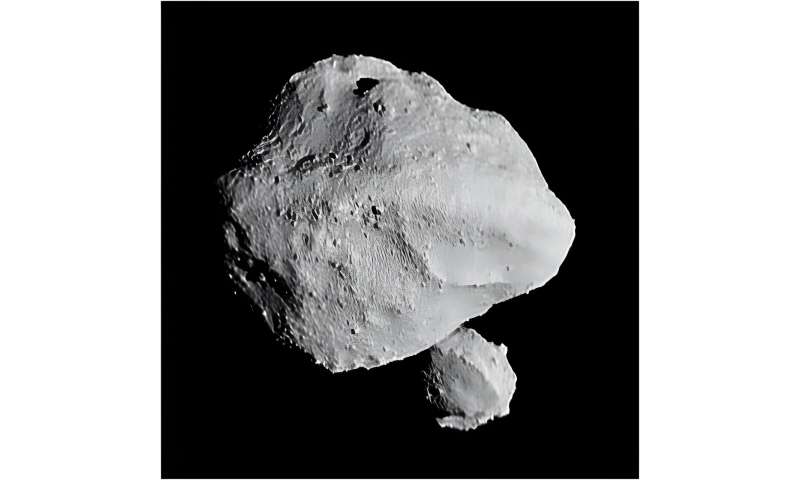Lucy mission shows Dinkinesh asteroid is actually a binary

New images captured by NASA's Lucy spacecraft confirmed that the small main belt asteroid Dinkinesh is a binary, two asteroids that orbit a common center of mass. The SwRI-led mission will now fly by 11 asteroids in its 12-year mission to Jupiter's Trojan asteroids. Dinkinesh was meant to be the first asteroid that Lucy flew by but ended up being the first two.
"Dinkinesh really did live up to its name; this is marvelous," said Lucy Principal Investigator Dr. Hal Levison, of SwRI's Solar System Science and Exploration Division in Boulder, Colorado, referring to the meaning of Dinkinesh ("you are marvelous") in Amharic. "When Lucy was originally selected for flight, we planned to flyby seven asteroids. With the addition of Dinkinesh, two Trojan moons, and now this satellite, we've turned it up to 11."
As Lucy approached Dinkinesh, the team noticed that the asteroid's brightness was changing in interesting ways, and the team wondered if Dinkinesh was a binary system. As the spacecraft sent back its first images, this was confirmed: Dinkinesh is a close binary. From a preliminary analysis of the first available images, the team estimates that the larger body is approximately 0.5 miles (790 m) at its widest, while the smaller is about 0.15 miles (220 m) in size.
This flyby of Dinkinesh primarily served as an in-flight test of the spacecraft, specifically focusing on testing the systems that allow Lucy to autonomously track an asteroid as it flies past at 10,000 miles per hour, referred to as the terminal tracking system.
"We have seen many asteroids up close, and one may think little is left to discover and surprise us. Well, that is clearly wrong. Dinkinesh, and its enigmatic moonlet, differ in some interesting ways from the similarly sized near-Earth asteroids that have been seen by spacecraft like OSIRIS-REx and DART," said Deputy Principal Investigator Dr. Simone Marchi of SwRI.
While this encounter was carried out as an engineering test, the team's scientists are excitedly poring over the data to glean insights into the nature of small asteroids.
"Sharing the anticipation of viewing the first images with the team has been incredibly thrilling, as has been the lively discussion regarding the geology of these two remarkably small yet fascinatingly intriguing targets. I am eagerly looking forward to unraveling the color variations across this binary system," said Dr. Silvia Protopa of SwRI.
The Lucy team will continue to downlink the remainder of the encounter data from the spacecraft over the next week. They will use the data to evaluate Lucy's behavior during the encounter and prepare for the next close-up look at an asteroid, the main belt asteroid Donaldjohanson, in 2025. Lucy will then be well prepared to observe the mission's main targets, the Jupiter Trojan asteroids, starting in 2027.
Provided by Southwest Research Institute